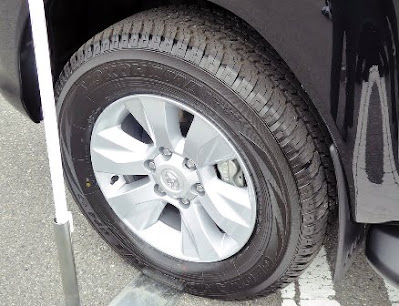The Importance of Car Wheel Balancing for a Smooth, Safe, and Efficient Ride
Car wheel balancing
When it comes to vehicle maintenance, there are numerous aspects to consider, and one crucial area that often goes unnoticed is car wheel balancing. Proper wheel balancing plays a significant role in ensuring a smooth, comfortable, safe, and efficient driving experience. In this comprehensive guide, we will delve deep into the importance of car wheel balancing, explore the signs of unbalanced wheels, understand the process of balancing, and discuss the myriad benefits of regular wheel balancing.
Understanding Car Wheel Balancing
Car wheel balancing is the process of evenly distributing the weight around the axle of each wheel and tire assembly. It involves placing small weights on the wheel rims to counterbalance any weight variations. The goal is to ensure that each tire rotates smoothly without any excessive vibration or wobbling. By achieving proper wheel balance, you can prevent potential issues and optimize the performance of your vehicle.

Signs of Unbalanced Wheels
Unbalanced wheels can significantly affect your driving experience and safety. Here are some common signs that indicate your car wheels may be unbalanced:
- Vibrations: If you feel vibrations in the steering wheel, seat, or floorboard, especially at certain speeds, it is likely due to wheel imbalance.
- Uneven Tire Wear: Unbalanced wheels can cause uneven wear patterns on your tires, such as cupping or feathering. Inspecting your tires regularly can help identify potential balance issues.
- Steering Issues: If your vehicle tends to pull to one side or if the steering feels off-center, it may be a result of wheel imbalance.
The Wheel Balancing Process
Wheel balancing involves several steps to achieve optimal balance. Here is an overview of the process:
- Wheel Inspection: A technician inspects the wheels for any visible damage, such as bent rims or worn-out components, which can affect the balance.
- Mounting the Wheel: The technician mounts the wheel and tire assembly onto a balancing machine, which measures the current balance and identifies any weight variations.
- Adding Balance Weights: Based on the readings from the balancing machine, the technician adds small weights to the wheel rims to counterbalance any weight variations.
- Fine-Tuning: The technician spins the wheel again to verify that it is properly balanced. If adjustments are needed, additional weights are added or removed until the desired balance is achieved.
Benefits of Regular Wheel Balancing
Regular wheel balancing offers numerous advantages for both your vehicle and your overall driving experience. Let's explore some of these benefits in detail:
- Smooth Ride: Balanced wheels eliminate vibrations, providing a smoother and more comfortable ride for you and your passengers. This leads to a more enjoyable driving experience, especially during long journeys.
- Extended Tire Life: Wheel imbalance causes uneven tire wear, reducing the lifespan of your tires. By regularly balancing your wheels, you can ensure that the tires wear evenly, increasing their longevity and saving you money in the long run.
- Improved Safety: Balanced wheels improve traction and handling, enhancing the overall safety of your vehicle. Properly balanced wheels contribute to better control, especially during sudden maneuvers or emergency situations, reducing the risk of accidents.
- Enhanced Fuel Efficiency: Imbalanced wheels create additional resistance, leading to decreased fuel efficiency. By keeping your wheels properly balanced, you can optimize your vehicle's fuel economy, saving you money at the pump.
When to Get Your Wheels Balanced
To maintain optimal performance and safety, it is crucial to have your car wheels balanced in various scenarios:
- When Installing New Tires: Whenever you install new tires, it is essential to have the wheels balanced to avoid any potential imbalances caused by manufacturing variations.
- After Tire Replacement: If you replace a tire due to damage or wear, it is important to balance the newly installed tire to maintain proper weight distribution.
- Signs of Imbalance: If you experience any of the signs mentioned earlier, such as vibrations or steering issues, it is advisable to get your wheels balanced promptly to prevent further complications.
- Periodic Maintenance: Regular wheel balancing every 5,000 to 6,000 miles (or as recommended by your vehicle's manufacturer) is a proactive approach to maintaining balanced wheels and optimal performance.
Professional Wheel Balancing
While some individuals attempt to balance their wheels at home, it is highly recommended to seek professional assistance for accurate and precise balancing. Automotive service centers and tire shops have specialized equipment, such as computerized wheel balancers, that ensure an accurate balance and a smoother ride. Trained technicians can identify any wheel or tire issues and provide the necessary adjustments or corrections.
DIY Wheel Balancing Tips
If you're inclined to balance your wheels at home, here are some general guidelines to consider:
- Use a Balancing Stand: Invest in a reliable wheel balancing stand to help you determine any weight variations.
- Balance Weights: Purchase a set of balance weights suitable for your wheel rims and use them to counterbalance any identified weight variations.
- Take Your Time: Balancing wheels requires patience and precision. Take your time to ensure accurate balance and consult online tutorials or seek advice from experienced enthusiasts if needed.
Conclusion
Car wheel balancing is a critical aspect of vehicle maintenance that should never be overlooked. By addressing wheel imbalances promptly and regularly, you can enjoy a smoother, more comfortable, safe, and efficient driving experience. Properly balanced wheels contribute to improved tire life, enhanced safety, and optimized fuel efficiency. So, make wheel balancing a routine part of your vehicle's maintenance schedule, and reap the benefits of a well-balanced ride.
0 Response to "The Importance of Car Wheel Balancing for a Smooth, Safe, and Efficient Ride"
Post a Comment